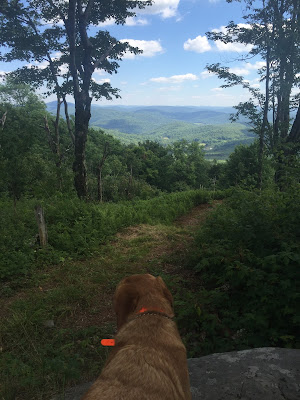The 7,000 acre New York State Department of Environmental Conservation wildlife management area that composes Bear Spring Mountain is flush with opportunities for hiking.
A short, easy hike is Trail No. 5, Fork Mountain Trail, located approximately 1/2 mile off West Trout Brook Road, accessed by state Route 206 via Beers Brook Road.
The trail is one of only two throughout the mountain that were mowed by state employees earlier in the season, which makes it one of the few that are accessible without much effort.
The gently rolling 1.28 mile hike to Meditation Rock carries hikers through mature hardwood and evergreen forest land along the ridge of the mountain.
Trekking the peak provides valley views which vary seasonally.
During late summer, the trails and adjacent tree-lines are overflowing with wildflowers, wild edibles and mushrooms.
 |
St. John's Wort
|
July's end provides hikers with remnants of juicy raspberries as August promises an overabundance of blackberries trail-side.
An early morning hike gave way to carpets of healing St. John's Wort, sour Wood Sorrel, yarrow and a surprising Amanita Muscaria subspecies mushroom, as well as a variety of unidentified but interesting carnation-like ruffled-edge mushrooms.
 |
| Amanita Muscaria subspecies |
Mediation Rock is hidden from view by blackberry brambles from the trail during late summer, but marking mileage via a pedometer or with GPS coordinates
 |
| GPS coordinates for Meditation Rock |
 |
| Bob and Maxine Locherer of Walton are frequent visitors to Bear Spring Mountain. |
Trail head parking, near the sign-in sheet, can easily accommodate a half-dozen vehicles.
* Lillian Browne is exploring the world around her, one step at a time, with her dog - Charlie. Follow her on Instagram at lillian.browne, on Twitter @browneinwalton or on Facebook









































